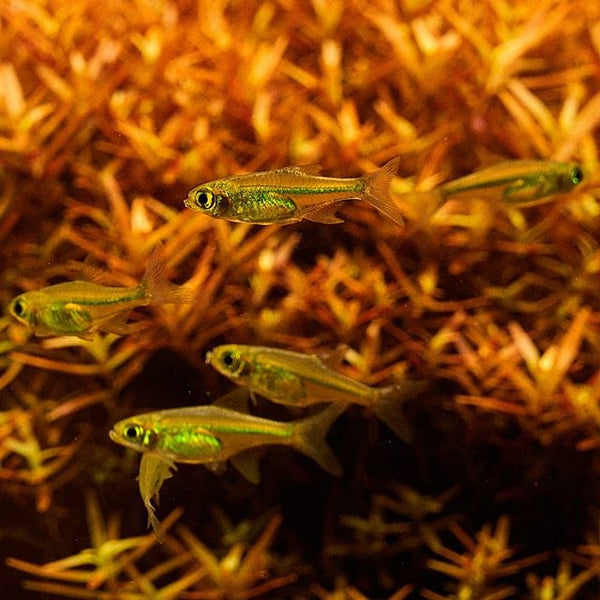- Continue Shopping
- Your Cart is Empty
Beyond the good looks...
Botanical-style aquarium keeping is more than just a "style" or look. It's an approach that recognizes that there is an interdependence between the materials which comprise our aquatic habitats and the animals which reside in them. The connection between the terrestrial habitat and the aquatic one are fascinating.
One look at our friend David Sobry's pics of the Amazon region will launch a million ideas for your next aquarium!

As we know now, the influence of factors like soil, and the presence of terrestrial materials like seed pods, leaves, and branches play a huge role in the chemical composition and, yeah- the appearance of the water. This is true in the wild habitats and the aquarium A different "look" for sure- but also a different way of looking it how our aquatic habitats function.
Tannins from wood and botanical materials will leach into the water, providing the characteristic "tint" that we've become so accustomed to in our little niche. And that's just fine with us. You can easily have very high water quality (ie; low in nitrates, phosphates, and other substances) and still have a 'tint." In fact, water can be of very high quality and have an almost "patina" of finely dissolving materials in it and still test at high water quality levels.
In our type of aquarium, the color is no indication of the quality of the water. We've hit that topicals like 100 times in the past three years. For some reason, those unfamiliar with our practices might make a determination that these systems have lower water quality than their crystal-clear counterparts.
Not true...
Now, that being said, it would be utterly irresponsible of us to say that you can simply "add stuff" to an aquarium- specifically one that has been in a stable existence for some time- and not be concerned about any impact on water quality. That's part of the reason why we plead with you to go slowly when adding these materials to an established tank, and to test and gauge the impact on your water quality.

I can't help but reiterate once again that blackwater, botanical-style aquariums are no more difficult to set up and maintain than any other type of aquarium, despite their unique appearance and the "mystique" which surrounds them in the hobby.
They do require understanding of what's going on and what is involved, observation, and upkeep...And, like with any type of aquarium , if you're not careful about following good common sense procedures, you can have a bad outcome. Stuff happens. It's the reality of forging into new territory, but it contributes to the body of knowledge that is the aquarium hobby.

Why am I mentioning this negative stuff?
Well, because as this approach becomes more popular, it's easy to lose sight of the fact that simply adding botanical materials to a closed aquarium environment is adding to the bioload of the system. It's important to remember that this is more than just an "aquascaping approach", as we've reiterated before.
Adding lots of leaves and botanicals can certainly have an impact on the water quality if you don't go slowly, observe carefully, and execute standard aquarium husbandry procedures (e.g., water exchanges, use of chemical filtration media, proper stocking, feeding etc.).

Going slowly not only allows you time to react- it gives your bacterial and fungal population the opportunity to grow and adjust to the increased bioload. These organisms can go a long way towards creating a stable, healthy botanical aquarium environment...But they can't work miracles- and they can't do it alone.
A healthy dose of common sense and judgement- along with time-honored aquatic husbandry techniques goes a long way towards a successful outcome!
Remember this is you plow forward...into the darkness!
Stay excited. Stay informed. Stay confident. Stay diligent...
And Stay Wet.
Scott Fellman
Taninn Aquatics







Scott Fellman
Author